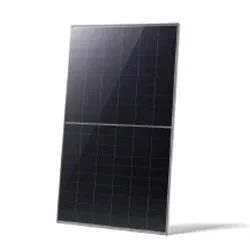Innovative Strategies for Enhancing Solar Thermal Energy Efficiency and Performance
Solar thermal systems have emerged as a prominent technology in the quest for renewable energy solutions. By harnessing the power of the sun, these systems convert solar energy into heat, which can be used for various applications including water heating, space heating, and industrial processes. Unlike photovoltaic systems that generate electricity, solar thermal systems focus on the heating capabilities of solar energy, making them an efficient and practical choice for many settings.
At the core of a solar thermal system is the solar collector, which absorbs sunlight and converts it into thermal energy. There are several types of collectors, including flat-plate collectors, evacuated tube collectors, and concentrating solar power systems. Flat-plate collectors are the most common and are often found on the rooftops of residential and commercial buildings. They consist of a dark, absorbent surface that captures sunlight and heats up a fluid, usually water or antifreeze. This heated fluid is then circulated through pipes to deliver warmth wherever it is needed.
One of the key advantages of solar thermal systems is their efficiency. These systems can achieve a higher efficiency rate compared to solar photovoltaic systems when it comes to heating applications. For instance, a well-designed solar water heating system can provide 60% to 80% of the hot water needs for a household, significantly reducing reliance on conventional energy sources. Additionally, these systems can help lower utility bills, making them an attractive investment for homeowners and businesses alike.
solar thermal system

Moreover, solar thermal technology is versatile. It can be used in a variety of applications ranging from residential hot water systems to large-scale installations for industrial heating processes. In some cases, these systems can be integrated into district heating networks, providing thermal energy to multiple buildings from a central solar collector field.
Despite their numerous benefits, the adoption of solar thermal systems faces challenges, including initial installation costs and the need for adequate sunlight in certain geographic locations. However, with ongoing technological advancements and increasing awareness of the importance of sustainable energy, solar thermal systems are expected to play a significant role in reducing carbon emissions and promoting energy independence in the coming years. As the world moves towards a more sustainable future, incorporating solar thermal solutions into energy strategies will be vital in addressing climate change and ensuring a reliable energy supply.
-
Unlocking Energy Freedom with the Off Grid Solar InverterNewsJun.06,2025
-
Unlock More Solar Power with a High-Efficiency Bifacial Solar PanelNewsJun.06,2025
-
Power Your Future with High-Efficiency Monocrystalline Solar PanelsNewsJun.06,2025
-
Next-Gen Solar Power Starts with Micro Solar InvertersNewsJun.06,2025
-
Harnessing Peak Efficiency with the On Grid Solar InverterNewsJun.06,2025
-
Discover Unmatched Efficiency with the Latest String Solar InverterNewsJun.06,2025







